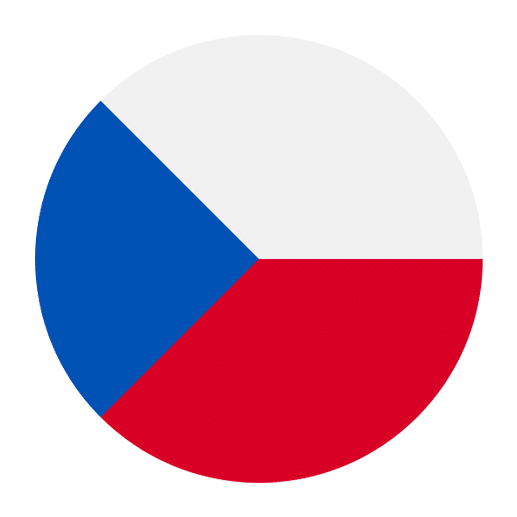Learning a new language can be both an exhilarating and challenging experience. For English speakers, delving into the intricacies of Czech, a West Slavic language, can present unique hurdles, particularly when it comes to mastering noun forms. One of the key areas where learners often stumble is pluralization. Czech plural nouns follow specific rules, yet they also come with a fair share of exceptions. This article aims to provide a comprehensive guide to understanding Czech plural nouns, covering the rules, patterns, and exceptions you’ll encounter on your language learning journey.
Basic Rules of Czech Plural Nouns
To begin with, it’s important to understand that Czech nouns are categorized by gender: masculine, feminine, and neuter. Each gender has its own set of rules for forming plurals. Here’s a breakdown of the basic rules:
Masculine Nouns
Masculine nouns in Czech are further divided into animate (living beings) and inanimate (non-living objects) categories. The pluralization rules differ slightly for each.
Animate Masculine Nouns:
– If the noun ends in a consonant, typically, you add “-i” or “-ové” to form the plural.
– Example: “muž” (man) becomes “muži” (men).
– Example: “student” (student) becomes “studenti” (students).
Inanimate Masculine Nouns:
– These usually take the suffix “-y” or “-e” to form the plural.
– Example: “hrad” (castle) becomes “hrady” (castles).
– Example: “kluk” (boy) becomes “kluci” (boys).
Feminine Nouns
Feminine nouns typically end in “-a,” “-e,” or a consonant. Here’s how you pluralize them:
– If the noun ends in “-a,” change “-a” to “-y.”
– Example: “žena” (woman) becomes “ženy” (women).
– If the noun ends in “-e,” change “-e” to “-ě.”
– Example: “růže” (rose) becomes “růže” (roses) – note that this one remains the same.
– If the noun ends in a consonant, add “-e.”
– Example: “kost” (bone) becomes “kosti” (bones).
Neuter Nouns
Neuter nouns typically end in “-o,” “-e,” or “-í.” Here’s how to handle them:
– If the noun ends in “-o,” replace it with “-a.”
– Example: “město” (city) becomes “města” (cities).
– If the noun ends in “-e,” replace it with “-e.”
– Example: “moře” (sea) remains “moře” (seas) – again, no change.
– If the noun ends in “-í,” it remains “-í.”
– Example: “stavení” (building) stays “stavení” (buildings).
Declension Patterns
Czech nouns are further complicated by their declension patterns, which change based on case (nominative, genitive, dative, accusative, vocative, locative, and instrumental). Each noun class has specific patterns, and these affect plural forms as well.
Masculine Animate Declension Patterns
For masculine animate nouns, you will often see these patterns:
– Nominative: Add “-i” or “-ové.”
– Example: “učitel” (teacher) becomes “učitelé” (teachers).
– Genitive: Change “-a” to “-ů.”
– Example: “kamarád” (friend) becomes “kamarádů” (friends).
– Dative: Add “-ům.”
– Example: “muž” (man) becomes “mužům” (men).
– Accusative: Add “-y.”
– Example: “přítel” (friend) becomes “přátele” (friends).
– Vocative: Usually similar to nominative.
– Example: “soudce” (judge) becomes “soudci” (judges).
– Locative: Add “-ech.”
– Example: “učitel” (teacher) becomes “učitelích” (teachers).
– Instrumental: Add “-i.”
– Example: “přítel” (friend) becomes “přáteli” (friends).
Masculine Inanimate Declension Patterns
For masculine inanimate nouns, the patterns are slightly different:
– Nominative: Add “-y” or “-e.”
– Example: “strom” (tree) becomes “stromy” (trees).
– Genitive: Change “-a” to “-ů.”
– Example: “hrad” (castle) becomes “hradů” (castles).
– Dative: Add “-ům.”
– Example: “strom” (tree) becomes “stromům” (trees).
– Accusative: Add “-y.”
– Example: “hrad” (castle) becomes “hrady” (castles).
– Vocative: Usually similar to nominative.
– Example: “hrade” remains “hrady.”
– Locative: Add “-ech.”
– Example: “strom” (tree) becomes “stromech” (trees).
– Instrumental: Add “-y.”
– Example: “hrad” (castle) becomes “hrady” (castles).
Feminine Declension Patterns
For feminine nouns, the patterns are as follows:
– Nominative: Replace “-a” with “-y.”
– Example: “žena” (woman) becomes “ženy” (women).
– Genitive: Replace “-y” with “-.”
– Example: “žena” (woman) becomes “žen” (women).
– Dative: Replace “-ě” with “-ám.”
– Example: “žena” (woman) becomes “ženám” (women).
– Accusative: Replace “-u” with “-y.”
– Example: “žena” (woman) becomes “ženy” (women).
– Vocative: Usually similar to nominative.
– Example: “žena” (woman) becomes “ženy” (women).
– Locative: Replace “-ě” with “-ách.”
– Example: “žena” (woman) becomes “ženách” (women).
– Instrumental: Replace “-ou” with “-ami.”
– Example: “žena” (woman) becomes “ženami” (women).
Neuter Declension Patterns
For neuter nouns, the patterns generally follow these rules:
– Nominative: Replace “-o” with “-a.”
– Example: “město” (city) becomes “města” (cities).
– Genitive: Replace “-a” with “-.”
– Example: “město” (city) becomes “měst” (cities).
– Dative: Replace “-u” with “-ům.”
– Example: “město” (city) becomes “městům” (cities).
– Accusative: Replace “-o” with “-a.”
– Example: “město” (city) becomes “města” (cities).
– Vocative: Usually similar to nominative.
– Example: “město” (city) becomes “města” (cities).
– Locative: Replace “-u” with “-ech.”
– Example: “město” (city) becomes “městech” (cities).
– Instrumental: Replace “-em” with “-y.”
– Example: “město” (city) becomes “městy” (cities).
Common Exceptions and Irregularities
As with any language, Czech has its fair share of exceptions and irregularities when it comes to plural nouns. Here are some of the most common ones you might encounter:
Irregular Masculine Nouns
Some masculine nouns don’t follow the standard rules:
– “Člověk” (person) becomes “lidé” (people) instead of the expected “člověci.”
– “Pán” (gentleman) becomes “páni.”
Irregular Feminine Nouns
Certain feminine nouns also break the rules:
– “Ruka” (hand) becomes “ruce” (hands) instead of “ruky.”
– “Noc” (night) becomes “noci” (nights).
Irregular Neuter Nouns
Neuter nouns can be irregular too:
– “Dítě” (child) becomes “děti” (children) instead of “dítka.”
– “Kost” (bone) becomes “kosti” (bones).
Tips for Mastering Czech Plural Nouns
Given the complexity and the exceptions, mastering Czech plural nouns can be a daunting task. Here are some tips to help you along the way:
1. Practice Regularly
Repetition is key when learning any new linguistic concept. Regularly practice forming plurals and using them in sentences. The more you practice, the more intuitive it will become.
2. Use Mnemonics
Mnemonics can help you remember irregular forms and exceptions. Create associations or stories that link the singular and plural forms in your mind.
3. Engage with Native Speakers
Engaging in conversation with native speakers can provide you with practical experience and immediate feedback. This will help reinforce your learning and expose you to the natural use of plural nouns.
4. Read and Listen
Immerse yourself in Czech literature, newspapers, and audio resources. Pay attention to how plural nouns are used in different contexts. This will help you see the rules and exceptions in action.
5. Keep a Journal
Maintain a language journal where you jot down new words, their plurals, and any exceptions you come across. Reviewing your notes regularly can reinforce your understanding.
Conclusion
Mastering Czech plural nouns involves understanding a set of rules, patterns, and a fair number of exceptions. While it can be challenging, it is entirely achievable with consistent practice and exposure. By breaking down the rules by gender, familiarizing yourself with declension patterns, and noting common exceptions, you can build a solid foundation in this aspect of the Czech language. Remember to practice regularly, use mnemonics, engage with native speakers, immerse yourself in the language, and keep a journal. With these strategies, you’ll find yourself navigating the complexities of Czech plural nouns with increasing confidence and ease. Happy learning!

